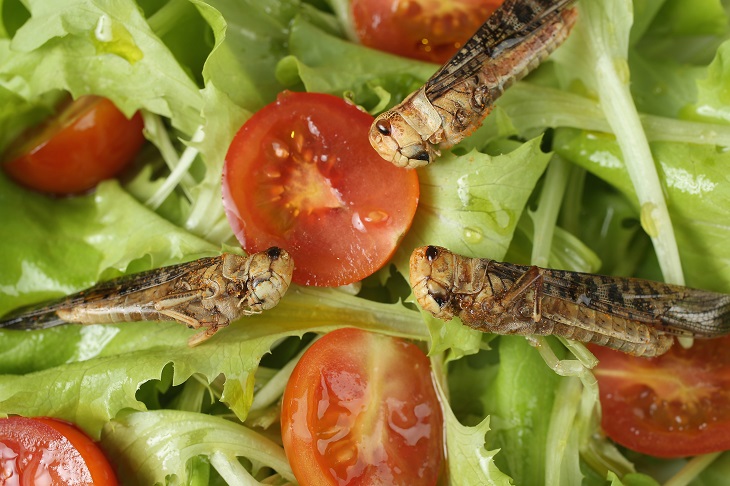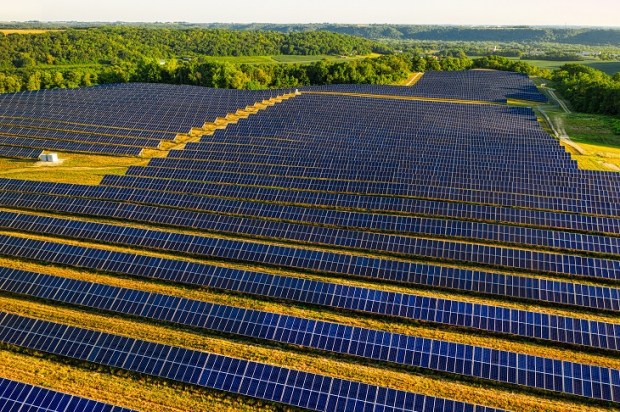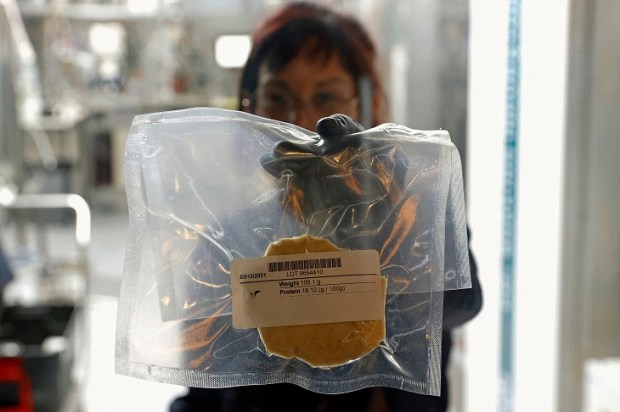Net Zero rules employed by the United Nations, European Union, and domestic political parties across the world are expected to cause the imminent shutdown of high-production farmland, or at least, significantly reduce its capacity.
Yes, after centuries of perfecting food growing techniques, a bunch of bureaucratic regulators have decided to deliberately massacre the industry. Farmers in the Netherlands are first on the chopping block, with their historic estates being forcibly purchased by the State in what amounts to a complete erasure of private property rights.
As these policies are primarily targeting the world’s food bowls – the Netherlands, Canada, Sri Lanka, the United States, and Australia – the global agricultural supply chain can expect a prolonged artificial shortage of critical food items in the near future.
Food shortages, where demand remains the same or rises with population growth, results in the rapid increase of cost. Add to this problem huge changes to fertilisers, transport, red tape, pesticides, biosecurity, packaging, and labour.
We are already seeing the early stages of these policies play out in supermarkets across the Western world where gaps are appearing on the shelves, the diversity of products is in swift decline, and of the food that remains – its price is becoming a financial burden, even to the lower-middle class who have not struggled to afford food for three generations.
How convenient that some corporate and ideological partners of the international bureaucracies pushing these Net Zero policies are waiting in the wings with ‘planet saving’ food products!
In a world where fresh food is plentiful and cheap, no one would dream of sniffing around a lab for their next meal, but poverty is a powerful motivator to accept barely palatable crap sweetened with false virtue. Instead of counting calories, the next generation will be calculating their carbon footprint at the dinner table.
Keep in mind that this is a menu for the poor. Fresh food, real meat, and French wine will continue to fill the kitchens of the ruling classes. It’s the family of five squished into a city apartment, unable to turn the air-conditioner on for more than an hour a day, that will be faced with a range of cheap, depressing items at the supermarket.
The two emerging food groups for the latter half of this century are bugs and printed food – both of which are frequently grown in a lab.
Astonishingly, it is the ‘bug’ portion of this food pyramid that is rapidly making its way into the European shopping trolley, with crushed bug bits being approved as a filler or replacement for wheat. Whoever made that decision should be sat down in front of a plate of crickets and told to mash them up by hand before eating a loaf of bread made from the bits. Let’s see if they really think bug-meat is an appropriate substitute…
Within a few years, it will be extremely difficult for the average European to ensure that their meals are bug-free. Just as our food is currently tainted with chemicals and additives we’d be unlikely to pick if we knew what they were – the future of bread, flour, pasta, and sauces is sealed.
Nothing says ‘civilisational success’ quite like eating the critters that crawl over our mounting piles of garbage.
And yes, these bugs are grown in the lab, but in some ways this is worse. They are fed on a diet of chemicals, locked in tiny boxes, killed en masse, crushed up, and fed to us. At what point do you say that we had it ‘better’ thousands of years ago, salivating over a freshly roasted mammoth steak?
Vegans and vegetarians will want to avoid the eating of sentient insects. (Or maybe not? Who knows… Might be worth laying some money down on that.)
If these two groups of picky eaters remain true to their moral core, they will find their shopping experience rather patchy. The world’s farms are shrinking and the costs of transporting produce around the world is becoming fatally high. At some point Gen Z will realise that their local fruit market was put there by jumbo jets, ships, and vans. What sort of selfish vegan would insist a nation waste their carbon footprint flying fruit and vegetables in from another country? That would be literally destroying the world.
The supply problems of fresh produce may even be accidental, caused by incompetent governments failing to realise that the forced closure of oil and gas will create transport price hikes that no farmer can sustain and no customer can carry.
Regardless of how events play out, vegans and vegetarians will be offered lab-printed food as their ‘cheap’ and ‘convenient’ alternative. You can still have those cashews you love… We printed them out of chemicals for you this morning. They look a bit like a downloaded TV show from the early 2000s, but we promise they taste practically the same!
To compensate, there is a new ‘fad’ mulling around in its infancy. 3D-printed food is somewhat of a mixed bag. It covers everything from what a Mars expedition might expect – up to 5-star dining – and everything in-between. There are genres of 3D-printing, which vary wildly in quality and appeal.
At the high-quality end we have ‘fun food’, where 3D-printed food functions as a gimmick for restaurants. One Italian pasta company has been printing elaborate pasta shapes that serve as the centre pieces of dishes that are impossible to create with real pasta.
View this post on Instagram
This variety of 3D-printing is a quite palatable, as the base pasta mix is still handmade and then fed through printing machines. There is no doubt a future in this type of elevated cuisine in the same way that the Industrial Age led to factory-cut food shapes and the mass production of pasta.
On the more futuristic end of the scale, we have Tokyo’s Sushi Singularity. It describes its mission as:
‘Beyond the future of sushi. A world that sees sushi going digital and linked with the net will come about. Two revolutions are envisioned: 1) Sushi will connect people around the world, and will be produced, edited, and shared online in the form of “new sushi”. 2) Sushi combined with biometrics will enable hyper-personalisation based on biometric and genomic data. Sushi will break away from conventional concepts of food and be continually revised and updated at exponential speed! Humans know nothing about Sushi!’
These guys have a full futuristic enterprise going on where the dream is to digitise food, build a food database, transmit food digitally, and then reprint it.
View this post on Instagram
According to American Scientist:
‘Their 3D-printed food experiments include cell-cultured tuna in a filigreed cube, and octopus sculpted in a honeycomb lattice with negative stiffness. Most of their printing appears to be extrusion-based, using components that undergo computer-controlled mixing to generate the right flavours and textures. They also use a powder-based printing technique that incorporates high-powered lasers to fuse powders together.’
Forgive me if I prefer a quick trip to Croatia for a bit of freshly poached octopus or lightly fried calamari on the Ligurian coast. Some people like future-foods, I prefer old-style simplicity.
Other 3D-printing restaurants focus on meat-replacements which, more often than not, are actually printed from lab-grown fat and sinew. While the first form of 3D-printed restaurant food is about putting on a flashy, futuristic show, meat-replacements are more ‘on vibe’ with saving the planet. It’s about ‘responsible eating’ and finding ways to make the otherwise unpalatable tolerable. If we are honest, it also provides a way for vegetarians and vegans to cheat on the whole no meat pledge.
There is likely to be a backlash to all the bugs and sci-fi food if it goes from being a market option to a government-mandated initiative, as we have seen with electric vehicles. People may start trying to grow their own food – or at the very least, barter outside the government’s field of view with those who have the means to grow food. In some regional communities, this is already happening. Fresh produce is being shared amongst farms away from the greed of supermarket oligarchies and excessive agricultural regulators. If you ask most people whether they’d rather eat something grown in a lab or trust their mate farmer Jeff and his watermelon crop well… I know what I’m eating.
As we watch the wilful and reckless destruction of the world’s agricultural heartlands, we should ask ourselves, ‘Is this progress? Do we want politically-aligned laboratories controlling food production?’
A recent article on the topic writes:
‘Some believe that 3D-printed food could be the answer to global issues such as world hunger. It’s projected that the globe’s population will reach about 8 billion by 2025, which will put a heavy strain not only on food producers but also on food sources themselves. 3D printers can make use of abundant sources of nutrients, such as algae, and transform them into appetising foods that can be mass-produced fairly easily.’
Hmm… Maybe we should all join the farmers’ protests in the Netherlands instead before we reach the point of 3D-printed algae.
Got something to add? Join the discussion and comment below.
Get 10 issues for just $10
Subscribe to The Spectator Australia today for the next 10 magazine issues, plus full online access, for just $10.


























Comments
Don't miss out
Join the conversation with other Spectator Australia readers. Subscribe to leave a comment.
SUBSCRIBEAlready a subscriber? Log in